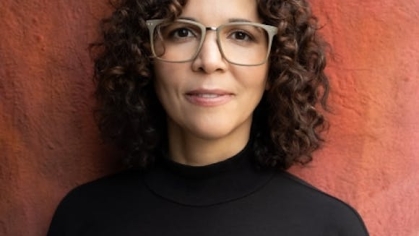One of the best-kept secrets about Newark is how it nurtures the arts. From the Robeson and other galleries at Rutgers University-Newark (RU-N), to the Newark Museum, to the majestic New Jersey Performing Arts Center and WBGO jazz radio, downtown Newark is humming with arts and artists. Innovative smaller spaces in the area that extends from Market Street up to the Broad Street rail station include the Gateway Project, Gallery Aferro and Aljira, a Center for Contemporary Art. The city’s Arts High School is one of the oldest arts-focused secondary schools in the United States.
RU-N is now injecting even more energy into Newark’s rich arts environment.
Arts and humanities programs make up a major portion of more than $4 million in “seed grants” that the chancellor’s office awarded in fall 2015 – for academic and cultural programs devised by RU-N faculty that are intended both to strengthen Newark communities and make the life of the city more integral to the university’s own scholarship.
“It is well established among those who study urban vitality,” says Peter Englot, RU-Newark’s senior vice chancellor for public affairs, “that the arts are a critical lever to pull to encourage greater vitality and spur economic development, as well as an important tool in developing identity.”
For decades, Rutgers University-Newark has forged close relationships with artists whose creations highlight the essence of the city, and the seed grants add important resources to existing programs while also creating new ways to inject the arts into Newark’s daily life. The guiding philosophy, expressed in RU-N’s Strategic Plan, is that the university “is of Newark, not just in Newark,” and that tapping the creativity of the city’s residents is good for the city and the university alike.
“There’s plenty of evidence that the best thinking arises out of a diversity of ideas,” says Englot. “There is so much we can learn from the community, and by engaging the community our teaching and scholarship will get better.”
Visual arts, writing and the art of storytelling all play a central role. 
Newark has long been home to the Krueger-Scott Collection – an archive possibly unique in the nation. Its audio tapes contain recollections by African Americans who settled in Newark during the great northward migration. People by the thousands hoped to leave behind hardships endured in the South for opportunities in the industrial North, supposedly a more hospitable place.
One seed grant will fund a Newark Citizen Historian Initiative, led by Adriana Cuervo, assistant director of the university libraries’ Institute of Jazz Studies – through which current generations of African American residents will be invited to help make their forebears’ stories even more vivid by scouring their homes for artifacts and heirlooms that can then be researched and displayed. They also will be invited to add their more recent recollections – as will another group whose story has long been missing from the city’s consciousness.
The Queer Newark Oral History Project, a collaboration with the Mayor’s LGBTQ Commission and the African American Office of Gay Concerns, will use another seed grant awarded to RU-N’s History Chair Beryl Satter to continue constructing a comprehensive narrative of a community that is part of every other demographic in the city, but frequently embraced by none.
According to Englot, the projects aided by these two grants will “weave together in important ways to tell the stories of particular groups within Newark, people who shared experiences that are also important today.”
It is especially noteworthy that those who have lived this history are not just handing information to others, but are deeply involved in shaping its presentation. The purpose of the grants is to enable residents to tell their story in their own words and their own style, with the resources of the university available to guide and assist.
Through another of the seed grants – obtained by faculty members Ian Watson, chair of the Department of Arts, Culture and Media; and James Abruzzo of Rutgers Business School – Rutgers University-Newark has made plans to launch a two-track Master’s Program in Urban Arts and Cultural Leadership.
One track is designed to develop artists’ creative talents as well as their entrepreneurial skills. “We want to think of arts incubation,” says Englot, “where the artist is a small businessperson who is trying to do something sustainable.”
The second track will train the next generation of leaders of the major urban and ethnic arts organizations both locally and across the United States.
The initiative will start as a certificate program in the fall of 2016, and enroll its first master’s candidates a year later.
The physical hub for much of this abundant new activity is Express Newark, a space under development in the former Hahne and Company department store building on Broad Street in the city’s downtown. It is somewhat removed from the campus, and that is deliberate – because it is intended to be not a university building as such, but what RU-Newark’s Strategic Plan calls a “third space,” where university and community can meet on an equal footing in facilities that both can comfortably call home.
“It is important that we get away from higher education’s old habit of acting like we are the center of the universe and that everyone should come to us,” says Englot. “For this kind of work to be most effective, and for broader public problem solving to be effective and sustainable, it should happen in places where all of the people coming to the table with their ideas feel like it is their place.”
Express Newark will include exhibition and musical performance spaces, a print shop and portrait studio, a media center, and lecture and meeting spaces where the minds, talents and artistic creations of faculty members, students and city residents alike will meld into a greater whole.
A Newark Media and Arts Hub, a seed-grant-funded center designed to train and sustain e-media and arts entrepreneurs, is on the drawing board for the Hahne site as well. Lyneir Richardson, executive director of the Center for Urban Entrepreneurship and Economic Development at Rutgers Business School, submitted the seed grant proposal for this project.
Seed grant activity will also radiate beyond downtown. It will include a series of pop-up exhibitions originating from the Paul Robeson Galleries and their director and curator Anonda Bell; as well as a visual arts initiative led by Jayne Anne Phillips, a renowned writer and professor in the Department of English, in collaboration with visual artist and professor Nick Kline and several area arts organizations. Along with a component housed at Express Newark, this program – through which artists will compile chapbooks of various visual works they create – will bring Master of Fine Arts candidates to Newark high schools to mentor students there.
In the university’s vision, the arts and humanities – nurtured together with the community – are an avenue with endless potential. At the same time, these new engagements are a way to make RU-N a better university by combining the assets of the institution with those of the vibrant Newark community to create extraordinary new learning environments and elevating scholarship and creativity.
Photo (top) courtesy of the Paul Robeson Galleries: David D. Oquendo gives an artist talk about his work in the Messier Gallery of the Paul Robeson Galleries, Paul Robeson Campus Center, Spring 2013.
Photo(inset) by Shelley Kusnetz: Visitors to the main Paul Robeson Gallery.


